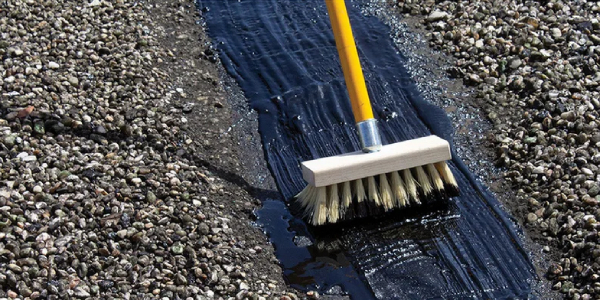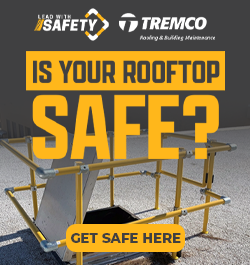Q&A - 25 years later, what sealer should be used?

This homeowner is wanting sealer on their roof, and to make sure the process goes smoothly, they reached out for some expert advice!
Debra, a homeowner from Montana, is getting ready to seal their roof, and wanted some clarification on what the exact process should be. This is what they asked:
I have a 75 square foot flat roof that has a membrane that is 25 years old and has never had any sealer put on it. I was told not to put a sealer on. I recently put on APOC number 139 because of all the small cracks and leaks that have been happening. That is a fibrous asphalt sealer. Do I need to put down granules on top of that or can I seal it with a non-fibrous asphalt roof sealer like blackjack? I wanted to put down two coats because we shoveled that roof off in the winter from snow load. So can I put a non-fibrous asphalt sealer over top of a fibrous one?
One of our expert roofers, Henry Staggs said this in response. The following is a transcript of his video response:
So, here's what I'm going to suggest when you're dealing with a roof that's got a 25-year-old roof membrane. First, I got to say, that's pretty good lifespan on any roof membrane so kudos to you for that roof membrane still being in service and hopefully it can be restored. It's important that you always follow all the proper procedures so you can ensure that it has a long service life when you're applying any kind of sealant, coating or anything like that. All those instructions can be found right on the can or on the manufacturer's website.
As for whether you should put granules on top, oh yeah absolutely. I would put granules on top of anything that I do uh that's asphaltic, because it helps protect the the asphalt from any decreation from UV light, which is uh not so friendly with most asphalt materials. That's why shingles and rolled roofing have granules embedded in the surface of it. That's called the cap sheet, that's there to protect all the other asphalt from the the sunlight. So, should you put granules on it? Yeah, I think so.
Now if you wanted to put a non-fiberous asphalt like blackjack over an existing fiber stealer, here's what I would suggest. You want to make sure that they're first compatible, will they adhere to each other? This is something you're going to find out from the manufacturer. So you can check the manufacturer's specifications and guidelines and they'll have recommendations pretty often on their website. You can look on the can itself or you can call them and most manufacturers you'll find pretty friendly and easy to talk to. They're happy to give out information, they make that stuff, they love to talk about it.
Now your surface preparation, this is the most important thing you can do. There was an old saying when I was young and I used to want to be a painter, they said the job is in the prep and it's absolutely true for every single job. So you have to make sure that the surface of the roof is clean and free of dust, before you can apply anything to it at all. And then, you may want to apply a primer to the surface of it, especially if it's recommended by the manufacturer. Then you can follow that by the top coat and then your granules on top of that, which you will toss into it or, as they say in the roofing world, broadcast them. We're going to broadcast the granules into that so you get them in there. To do that, you can take a little seed sprayer and you can spin it around, throw it around, just chuck it on there, whatever you want to do just make it nice and even while it's still wet and it'll dry into the into the coating.
Then I would suggest that when you're putting down your coating, two layers is perfect! Just make sure that each one is dry before you put the next one on or you going to have some problems with adhesion. Now I would say given the age of the roof, like I said several times in this little short video - 25 years is a pretty good lifespan for any kind of roof membrane, I would venture a guess that if you had a professional over there they'd probably want to replace it, so maybe consult with a professional before you do anything. See what they have to say, there may be a local consultant even in your area, a roofing contractor perhaps, you can go to the IIBEC website and see if there's any local consultants that might come over and take a peek at it for you. The consultant is not going to try and sell you a roof so they'll give you a pretty honest opinion. What will they charge? I don't know, you'll have to find that out with them.
So, yeah, it could be work. You could definitely make it work with the proper prep and proper application and using a primer on that roof before you put anything down. I think it's very possible.
You can also watch the video version of this transcript on YouTube!
Have a question? AskARoofer.
Find your local roofing contractor in the AskARoofer™ Contractor Directory.













Comments
Leave a Reply
Have an account? Login to leave a comment!
Sign In